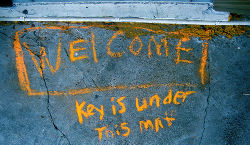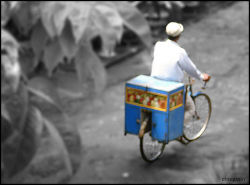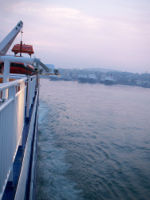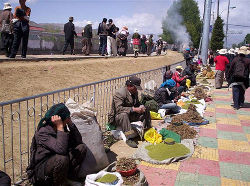Sales and Marketing
| Course Blog |
|---|
Sales and Marketing Course BlogFailed to load RSS feed from http://salesandmarketing.wordpress.com//rss.xml|Date|short|max=3: Error fetching URL: Maximum (0) redirects followed |
- The ability to sell and market products and services in the tourism sector is highly valued, especially when combined with excellent customer service.
This is a course for learning or refreshing your skills in tourism sales and marketing.
Otago Polytechnic will be running this course from July to September 2016. If you would like to join this course, please contact User:Lynn Brandham.
Peopled enrolled with Otago Polytechnic as students of this course have access to learning support services such as the libraries, regular contact with learning facilitators and lecturers, assessment services and certification.
Contents
Learning Objectives
1. Examine and analyse marketing techniques in a tourism organisation
2. Market a product and or service
3. Establish, maintain and increase a client base
4. Develop on-going business relationships
5. Sell goods/services to a client
- Learning Outcome 1 and 2 - 40% of total mark
- Learning Outcome 3, 4 and 5 - 60% of total mark
Course Schedule
Following is a list of topics we will work through in this course. Each topic has a general introduction, followed by a list of activities to work through, and finally a list of links and resources you might use to work through the activities.
Orientation and introductions
- Our first topic is to get to know the course, and the people involved in it. If you get lost later in the course, come back to this topic and use the activities to re orientate yourself to things. If you are still lost of confused, make contact with teachers or other students via the course weblog.
The Tourism Product
What is the "tourism product"?. These are some of the products you may be asked to sell in the future. Tourism (encompassing hospitality) products have unique features associated with them. People may buy (or you may sell) a tangible product eg. bungy jump with associated photos and video. However the true value of the product lies in the intangible experience or how it made/makes them feel. Another feature of the tourism product is their "temporary" nature. All tourism products whether they are airline seats, cruise accommodation, a hotel room or a rental car, have both a start and end point.
Selling goods and services
One of the most important aspects of a business is `making a sale' because if this does not happen you will have no customers and no revenue.In this unit we will look at what motivates buyers and what skills are required to turn their needs into sales.
To be able to understand the selling process, you need to know who is involved in the tourism industry and what are their needs. View the presentation and complete the exercises. Motivation to buy is another aspect which you need to consider. We will look at four motives or factors for buying - personal, social, emotional and rational.
Personal - personal motives may include; purchase for self or others, gathering of information, identification of possibilities, self-gratification, self-reward, discovery of new trends, browsing, filling in time, physical activity, experience of sights, sounds, smells.
Social - social motives may include; meeting others; communicating with peer, hobby, age group; meeting personal and/or professional needs; gaining status, attention, respect; being served; experiencing a different environment from home, work.
Emotional - emotional factors may include; excitement, fun, gratification, vanity, anxiety, security, style, status, leisure, pleasure.
Rational - rational factors may include; necessity, value, durability, investment, knowledge, economy, quality, health, efficiency.
Researching motivation is an important step to learning about your customers.
Business to business selling is most important in any industry. In the business to business model, one company sells to another company, not to the public. e.g. A hotel sells meeting room to a conference company, charter airline leases an aircraft to a group tour organiser, insurance company insures a cruise line against mishaps, Movieworld sells tickets to a tour operator.
Hard sell situations are where one company sells a product to another. The tour operator may on-sell these products by either incorporating them in their own product (eg Trafalgar Tours including Greek Island ferries (operated by Super Fast Ferries) in their Greek Island Hopper tour.
Soft sell sales situations are when a business will visit another company to reinforce the relationship e.g. Sales representatives from airlines, cruise companies and tour operators visit travel agencies on a regular basis often inviting the staff for refreshments. They are selling the quality and expertise of their organisation.
The direct model of distribution is when the suppliers e.g. hotels, airlines, rental cars sell to the public, commonly known as retailing. The indirect method is where the suppliers sell via intermediaries e.g. tour operators, travel agents. In this method, the original suppliers are now wholesalers (sell something to a business for resale), and the intermediaries are retailers (selling direct to the public).
Identify at least three different terms used in the tourism industry to describe sales reps and summarise what their position would involve.e.g. Inform their clients about the products they represent.
Read the article Supply Driven vs Demand Driven Distribution and summarise the main points in your own words. priceline website
You are employed by the office of the National Tourism of Madagascar and you are required to design a package to promote Madagascar as a new destination. You will be presenting your information to a group of travel agents. Follow the link for details.
The salesperson operating in the 'Front line to the Public' position is the most familiar type of selling. e.g. rental car reservationists, travel agents, hotel reservation personel.
This interaction can be in person, by email, by telephone or occassionally by `snail' mail. Check your own Sales and Services IQ by completing the questionaire Selling can be divided into two main areas, either transactional or consultative. Transactional selling is where you make it possible for someone to complete the 'transaction' of buying a product or service. e.g. an airline seat. Where your client/customer requires more information or advice than simply purchasing a seat, you enter into a 'consultative' interaction. Asking questions and making recommendations requires more skills and understanding and will build a more valuable relationship with your client. This will lead to maximum profit and increased client satisfaction. To assess your own selling skills complete the Activity
Welcoming' is one of the most important steps in the sales cycle. Think about your recent purchases - were they over the phone, in person or on the internet. All different modes of sales contact have welcoming aspects to them. View the first five slides on the power point and complete the exercise on Internetselling and Welcominga Client on the internet. The video will give you some ideas on how to judge a website.
'Determining Needs' is the section in the cycle where you use your 'interview' skills to ascertain if your customer is a browser, a shopper or a buyer. The questioning techniques include vanguard or closed-ended questions, explorer or open-ended questions and the most important skill of active listening. The [1] Activity] includes researching to fulfil the clients specified needs.
It is easy to fall into the habit of selling according to what your like and forget about your clients needs. In some instances, you are in the situation where there is no alternative. This is called an exclusive supplier relationship. e.g. Disneyland only sells Coca Cola. Think of another local example of this relationship. More frequently, the company may have a preferred supplier relationship. List the advantages this arrangement would have for a travel agent. Your clients will not always agree with your suggestions and there are several techniques which tourism specialists master to counter these objections. You can Paraphrase, Agree, Show and Seek (PASS) e.g. You think the tour is too expensive, I can understand that when you first look at the price it is above your budget, however, I am recommending this specific company because they include all your sightseeing and meals. Do you think this tour is now acceptable for your needs? The activity, Concerns will introduce another method of addressing clients concerns. Some clients are more difficult that others, view the short video for some insight.
Cross-selling and upselling are two very important strategies in selling. You may be drawn to a company because of an advertised product e.g. camera at a promotional price - this product is known as a loss leader. The company will make little or no profit on the camera and will hope to draw customers in where the salesperson can sell either additional, cross-selling, or more expensive, upselling, products. The above strategies are an integral part of selling in the tourism industry which operates on low profit margins. View the video and list opportunities in the tourism industry for cross-selling and upselling. Now look at the two activities one highlighting cross-sellingand one upselling.
The final step on the sales cycle is Achieving an Agreement. Unless you can convince your customer to buy, all you have done is provide service and information for free and they may purchase elsewhere. The final powerpoint will look at some traditional closers e.g. bear-trap close, and some better closing techniques.
In this final session, we will familiarise ourselves with the terminology and [2] which relates to the selling process in New Zealand. You must be aware of your liabilities under the following acts; Consumer Guarantees Act 1993, Fair Trading Act 1986, Privacy Act 1993.





